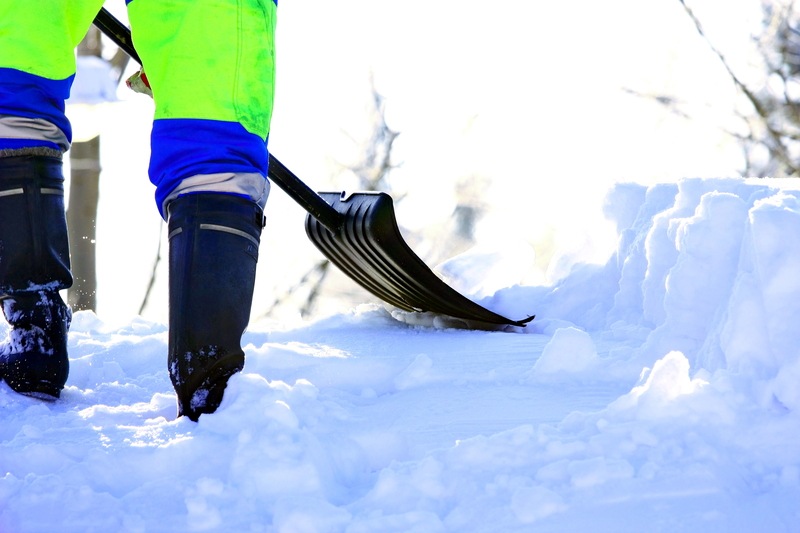If there is one thing you can count on in Alberta, it’s that winter will be cold! Construction workers, postal workers, delivery people, utility and telecommunication workers, firefighters, police, farmers, ranchers, fishers, loggers and others have to contend with cold conditions. Working in a cold environment can have adverse effects on human performance and health. Cold increases the risk of common hazards and cold-associated injuries. Understanding the health risks involved with working in extreme temperatures can help you protect your workers.
How does cold affect workers? A cold environment challenges workers in three ways:
- by air temperature
- air movement (wind speed)
- humidity (wetness)
What are the signs and symptoms of cold stress? There are a number of signs and symptoms that warn of possible cold stress.
Early warning signs
- feeling cold and shivering
- loss of feeling or tingling in fingers and toes
- trouble moving fingers, hands and toes (trouble doing tasks)
- frostnip (outermost layers of skin turn white)
- pain in extremities (hands, feet, ears)
- “unusual –umbles”, such as stumbles, mumbles, fumbles and grumbles
Worsening symptoms
- extreme shivering, and then shivering stops
- impaired coordination
- confusion
- complaints of nausea, fatigue, dizziness, irritability or euphoria
- frostbite (skin freezes deeply, turning blue or red)
- loss of consciousness
What can you do to prevent the adverse effects of cold on your employees?
The risk of cold injury can be minimized by proper equipment, safe work practices and appropriate clothing.
- Prompt workers to wear layers (dry and insulated protective clothing, with windproof and waterproof shells)
- Encourage them to protect their feet and toes (two layers of socks – cotton, silk or nylon underneath and wool socks on top – felt-lined, rubber bottomed, leather-topped boots with removable felt insoles)
- Have employees bring extra socks so they can dry their feet and change socks during the day
- Recommend they wear a pair of gloves under a pair of mittens and remove mittens to use gloved fingers as needed.
- Provide heated shelters (tents, cabins, restrooms, etc.) and encourage workers to take warm-up breaks when the temperature is -7˚C or lower
- Recommend employees stay hydrated with warm, sweet drinks
- Encourage them to keep their body moving, but limit heavy work to avoid perspiration
- Adjust the pace or rate of work so that it won’t cause heavy sweating that will result in wet clothing
- Monitor and assess weather changes throughout the day (at least every 4 hours)
- Give new employees time to become accustomed to the conditions before assigning a full workload
- Arrange tasks in such a way that sitting and standing for long periods is minimized
- Provide constant observation (supervisor or buddy system)
- Provide instructions in safe work practices (re-warming procedures, proper clothing practices, proper eating and drinking habits, recognition of cold stress/frostbite and signs and symptoms of hypothermia or excessive cooling of the body)
- Encourage employees to change into dry clothes when necessary
- Cover metal handles and bars with thermal insulating material.
- Use machines and tools designed to be operated without having to remove mittens or gloves
- Establish procedures for providing first aid and obtaining medical care and clearly communicate them to employees
- Assign at least one trained person per shift with the responsibility of attending to emergencies
- Encourage workers to eat properly (plenty of carbohydrates and fats) and frequently as working in the cold requires more energy to keep the body warm
- Recommend that employees get enough sleep. Outdoor work in the cold cannot be done safely with only a few hours of sleep
- Under extremely cold conditions make heated protective clothing available
What should you do if a worker has frostbite? Despite your best efforts, sometimes an employee will experience cold exposure. The following are tips for first aid for frostbite:
- Take steps to warm the area immediately. Put your hands under your armpits or pull your arms into the inside of your jacket for more direct contact with the body.
- Move the victim to a warm area
- Treat the person gently and monitor breathing
- Remove wet clothing and loosen or remove constricting clothing or jewellery
- Warm the person by wrapping them in blankets or by putting on dry clothing
- Cover the head and neck
- Warm the person slowly
- Avoid direct heat which can burn the skin.
- Loosely cover the affected area with a sterile dressing
- Place some gauze between fingers and toes to absorb moisture and prevent them from sticking together.
- If the person is alert, give them warm liquids to drink
- Check for signs of hypothermia and seek medical attention
- If necessary, quickly transport the victim to an emergency care facility
- DO NOT attempt to rewarm the affected frostbite area on site
- Do try to stop the area from becoming any colder
- DO NOT thaw the area if it may freeze again
- DO NOT rub the area or apply snow
- DO NOT allow the victim to drink alcohol or smoke
Workers suffering from exposure to the cold can experience thermal discomfort, increased strain, decreased performance and cold-related diseases and injuries. The best defence when working in cold temperatures is common sense. Knowing what to wear, what to eat and drink and what to do if you are suffering from a cold-related illness can save lives. Make sure your employees are properly protected and trained to reduce the negative impact of a cold work environment. Have a safe Alberta winter!
Need workers for a cold-weather position? Call the Calgary recruiting agency, Equation Staffing Solutions at 1-844-367-9618. We are a reliable, innovative, collaborative agency here to support you in your search for a position and/or personnel. Our experience will assist you! Contact us today.

